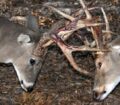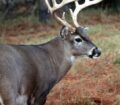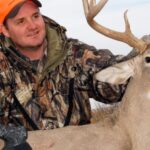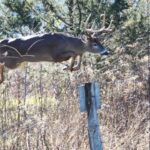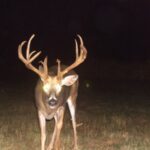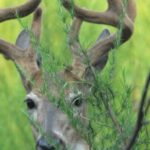Editor’s Note: Chris Kirby, owner of Quaker Boy Inc., bought his family’s business that was started in 1974 by his dad Dick Kirby, one of the legends in the calling industry. Dick Kirby was a very-versatile game caller, and Chris has followed in his footsteps, winning all the major turkey-calling championships after his dad won the World Champion of Champions, the World’s Goose Calling Championship, the World’s Moose Calling Championship, and others. Many outdoorsmen believe Chris Kirby was born with a turkey call and a deer call in his mouth because he can’t remember when he wasn’t calling critters. I’ve asked Kirby to tell us what he says to deer from the beginning of bow season until the end of rifle season to give you ideas for next year’s deer season. One of the best ways to learn a new technique or try a new product is to use it after deer season. If you’ve never attempted to call deer, leave your bow or gun at home, take some deer calls into the woods, and see what happens. Chris Kirby believes that if you’re a deer hunter, you’re a deer hunter all year.
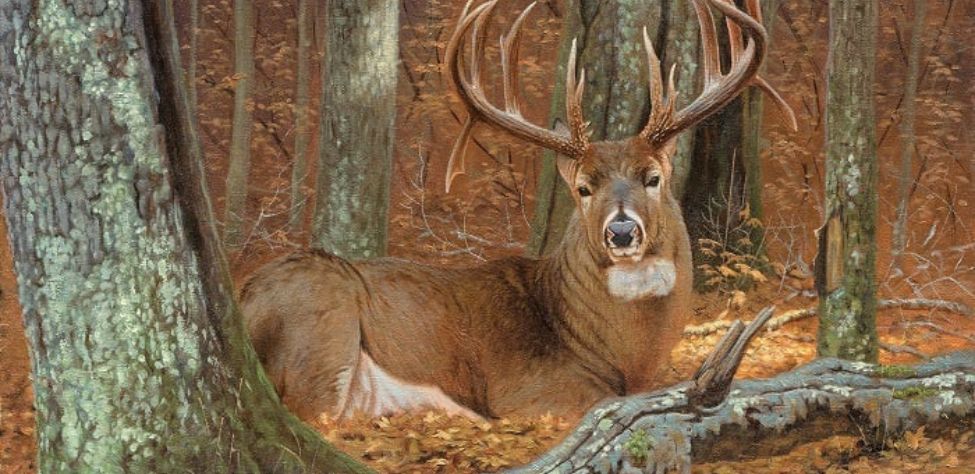
John E. Phillips: Chris, is there any point in calling in bucks in the post-rut?
Chris Kirby: I tone down my calling in the post-rut because the bucks have been chasing does and fighting other bucks. They know that most dogs that could be bred have been bred. By the post-rut, the bucks have usually skinned down– they’ve lost most of their fat reserve, but the drive and urge to breed are still high. Soft, less aggressive grunting can be very effective during the post-rut, giving the impression that there is still one more doe that hasn’t been bred. I usually do more grunting than bleating in the post-rut. In the early part of the post-rut, I’ll give a lot of bleats, but as the post-rut starts to calm down, I’ll give more grunt calls than bleat calls. Toward the end of the post-rut, I’ll give more bleat calls than grunt calls, and the grunt calls won’t be as aggressive or as loud as they were during the rut. Even though the buck may be worn out or worn down from chasing does, or he may be wounded or bruised up from fighting other days if he hears what he thinks may be an estrous doe and possibly a buck with her, many times you can tease him into coming in to bow or gun range with some softer, less-aggressive grunts and bleats.
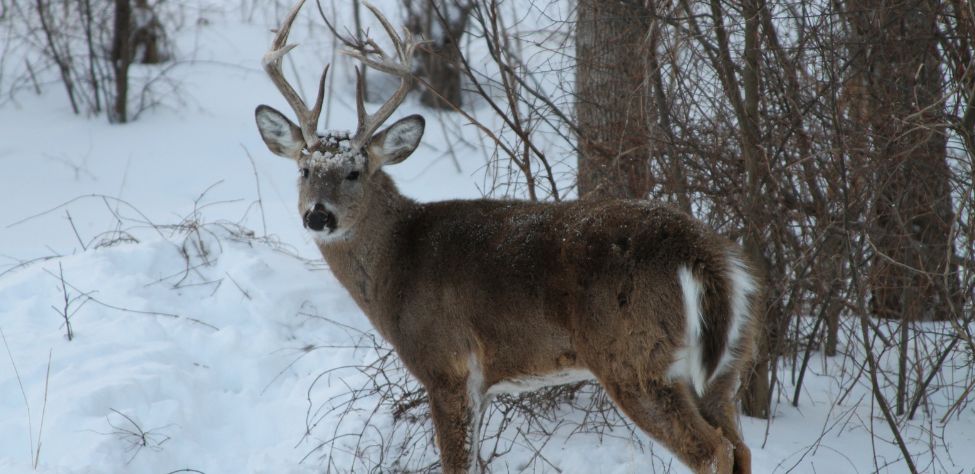
Phillips: Chris, most deer hunters will carry a grunt call with them all during deer season. The bleat call is often overlooked. Not as many hunters will have the bleat and grunt calls with them throughout deer season. Why do you put so much emphasis on the bleat call, and why is it so important to have a bleat call and use it during your calling sequences with a grunt call?
Kirby: Deer calling is much like turkey calling because I don’t go hunting turkeys with only one call. Different pitches and tones of a call significantly impact whether a deer will come in or not come into the hunter. That is why I will always carry a Bleat-in-Heat and a Bleat-in-Heat II bleat call, and I’ll often carry more than one grunt call. What a hunter is trying to do with his calls is paint a picture in a buck’s mind that an intruding buck is trying to breed his does. When you use the bleat call, you’re telling any buck that can hear it that there is a doe in his area, and the buck may come in just to the bleat call.
When you blow a grunt call, you’re telling that buck there’s another buck in my area that I don’t know, so I need to investigate him, and a buck may come in just to a grunt call. When you put the two calls together, the bleat and grunt call, the picture you are painting in the buck’s mind that can hear those calls is, “There’s a doe and another buck in my area trying to breed her.” The buck thinks an intruding buck is trying to come in and breed one of the does that has always been in his area, so the buck must investigate the intruding buck and the doe. I believe that using the bleat and grunt calls in the same series of calls you give is the most effective way to call in a buck at any time during deer season.

Another call I always have with me is a buck snort and wheeze – the Weezy Snort Wheeze Call. This is a very compelling call when I’m primarily rattling in Texas. I’ll usually give a snort wheeze as the first call I use and then start rattling antlers. But I’ve had little success using the snort-wheeze call in the East. I’ve had more success using the snort-wheeze call when hunting in the Midwest, but I always use my bleat and grunt call regardless of where I’m hunting in the United States. Like any other game call, deer calls are not a silver bullet that will always make deer respond. However, if you are not seeing deer, you have nothing to lose trying to call deer you can’t see. A buck who can’t hear the call will not come in. However, if you have a buck in thick cover where you can’t get a shot, or he’s out of range, and you want him to get in closer, deer calls can be very effective, especially if you can see the buck you are calling to and see how he is reacting to the calls.
Looking for more content? Check out our YouTube channel and watch “Bet on Bottlenecks for your Tree Stand Sites” by John E. Phillips.

How to Hunt and Take Big Buck Deer on Small Properties
In this book, you’ll hear from 14 hunters who either have gained permission or leased properties as small as six acres to as much as 250 acres, and how they consistently take older-age-class bucks off these little lands.
VERSIONS: AUDIBLE, KINDLE & PRINT

Jim Crumley’s Secrets of Bowhunting Deer
Using a black magic marker and a gray work jumpsuit, Jim Crumley of Buchanan, Virginia, drastically changed the nature and purpose of hunting camouflage when he created the first sportsman’s camouflage – Trebark. Crumley’s love of bowhunting and his desire to be more invisible changed hunting clothing forever.
In this hunting guide, he shares the wisdom that he’s learned throughout his lifetime about how to be a hunter, how to find a deer lease, how to scout for deer, and more.
Special features include how to:
- Have a magic 60 acres to hunt
- Decide the best equipment to use
- Find deer year-round
- Locate land to hunt
- Know the best place to put your tree stand
- Get bucks within bow range
VERSIONS: AUDIBLE, KINDLE & PRINT

How to Hunt Deer Like a Pro
How do you know if the land you hunt has a trophy deer on it? Wildlife manager Bob Zaiglin, of Uvalde, Texas and Jim Crumley, the father of modern-day hunting camouflage, tells you how to find out. GPS can make finding and taking that trophy buck easier. This hunting guide will teach you how to hunt big bucks where no one else can find them, how to call deer, and how to become versatile as a deer hunter, so that if one deer tactic doesn’t work, another one will.
In the chapter, “How to find Bucks at Scrape,” Dr. Keith Causey, retired professor of Wildlife Science at Auburn University, describes the best way to hunt a scrape.
Brad Harrison of Neosho, Missouri, is a nationally-known videographer, professional deer hunter and master at calling deer. Another master is Will Primos of Primos Game Calls. These two experts will tell the best deer calls and when to use them in this book.
And for over 20 years, Bo Pitman, lodge manager of White Oak Plantation, has been studying deer movement patterns. He explains what types of conditions are best for predicting deer movement.
VERSIONS: AUDIBLE, KINDLE & PRINT

Deer hunting and deer hunters are drastically changing each year. To learn new techniques for hunting deer and have more places to hunt, I’ve interviewed some of the best deer hunters in the nation and share their tactics in How to Hunt Deer Like a Pro: Volume II.
In Chapter 10, Jacob Lamar tells you his tactics for consistently taking older-age-class bucks on public lands in several states. Chapter 11, Bob Walker explains how to find places on public lands where you can hunt that 99 percent of the other hunters never have considered hunting. The Bonus Chapter with David Ramey tells you how, where, when and with what equipment to take big Kansas bucks on public lands by hunting in 100-degree weather when others won’t hunt.
Chapter 13, Mark Drury, his family and his guests take mature bucks every season by having more small places to hunt rather than one large property. Drury explains the strategy of having satellite farms to hunt that only may be 50-150 acres each or less. Chapter 15, Pat Reeve, who hunts far-northern states and Canada, says, “I don’t like hunting for mature bucks until the weather is 20 degrees or less.” Chapter 4, Dr. Larry Marchinton says that funnels are the most-reliable stand sites to hunt for big bucks and tells why.
VERSIONS: AUDIBLE & PRINT

